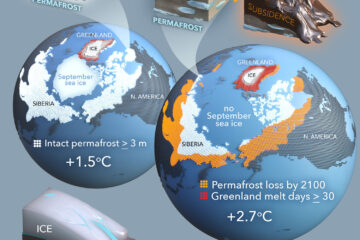Effects of multiple global change treatments on soil N2O fluxes
Global environmental changes are expected to alter ecosystem carbon and nitrogen cycling, but the interactive effects of multiple simultaneous environmental changes are poorly understood. Effects of these changes on the production of nitrous oxide (N2O), an important greenhouse gas, could accelerate climate change. We assessed the responses of soil N2O fluxes to elevated CO2, heat, altered precipitation, and enhanced nitrogen deposition, as well as their interactions, in an annual grassland at the Jasper Ridge Global Change Experiment (CA, USA). Measurements were conducted after 6, 7 and 8 years of treatments. Elevated precipitation increased N2O efflux, especially in combination with added nitrogen and heat. Path analysis supported the idea that increased denitrification due to increased soil water content and higher labile carbon availability best explained increased N2O efflux, with a smaller, indirect contribution from nitrification. In our data and across the literature, single-factor responses tended to overestimate interactive responses, except when global change was combined with disturbance by fire, in which case interactive effects were large. Thus, for chronic global environmental changes, higher order interactions dampened responses of N2O efflux to multiple global environmental changes, but interactions were strongly positive when global change was combined with disturbance. Testing whether these responses are general should be a high priority for future research.


